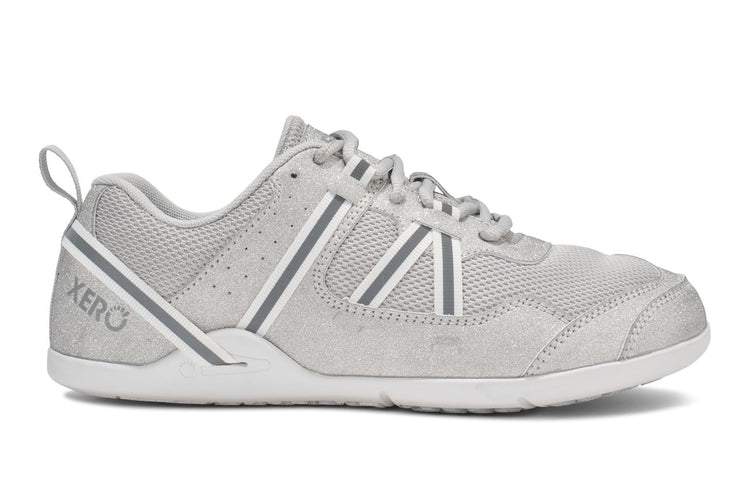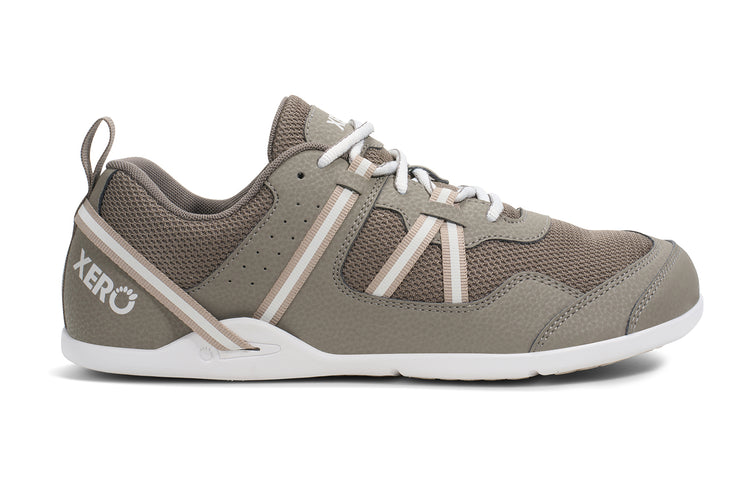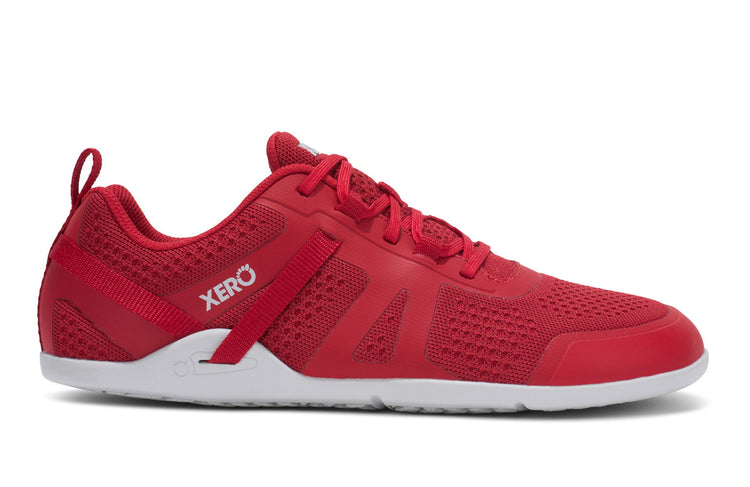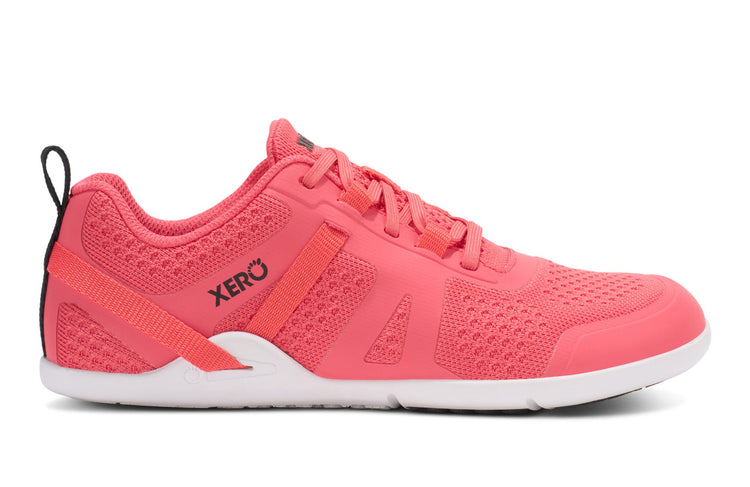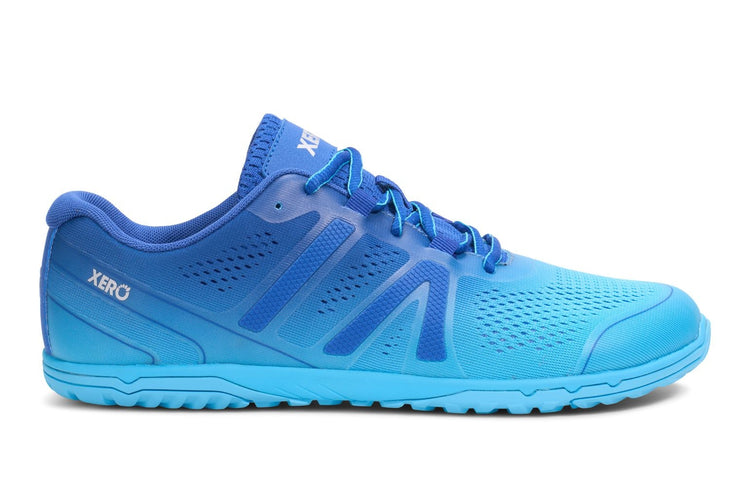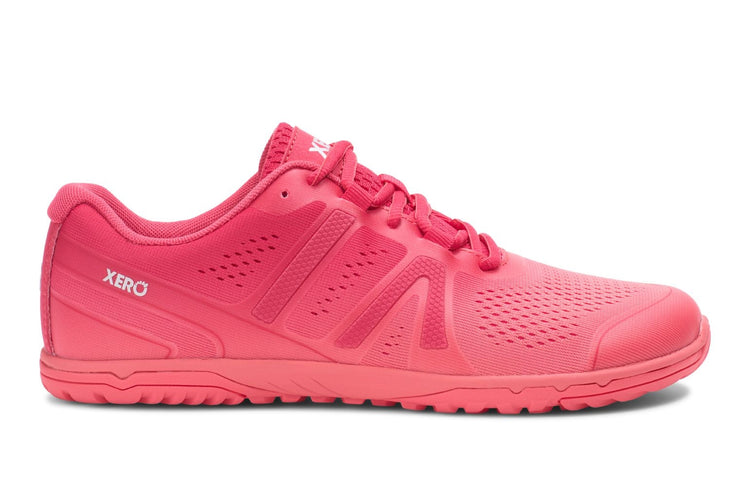latest News
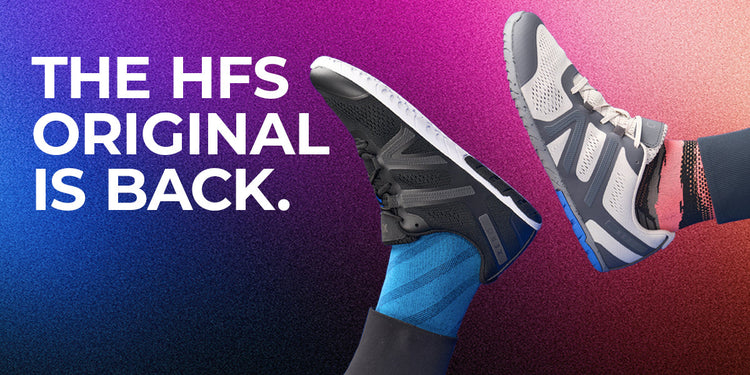
HFS Original or HFS II... Which One Is Right for Me?
Five years ago we launched the HFS road-running shoe, which became a huge favorite with barefoot enthusiasts for running and many other activities, as well.Then a little over a year ago, we launched the updated HFS II.Since many people owned both versions, we did a survey and asked which they liked better, the HFS Original or the HFS II… And the clear winner was… both.Survey results were 50/50 almost down to the number. You spoke. We listened.That’s right, the HFS Original is back! But that brings up a question…What’s the Difference Between the HFS Original and the HFS II? HFS Original vs HFS II - Which Is For You?Which HFS is right for you will depend on what you want from your running shoe…HFS Original – For a More Barefoot FeelIf you want as little as possible between you and the road when you run, then the HFS Original is the shoe for you. The HFS Original gives you: A closer connection to the ground A more responsive feel More ground feedback for more natural movement and agility. When we designed the HFS II, we added a thin BareFoam™ layer to the sole for some extra protection.If you’re a barefoot purist, or an experienced barefoot runner, this layer may be more than you want in your shoe. And indeed, some of our “most barefoot”Xero Shoes fans are the ones who asked us to bring back the HFS Original.HFS II – An Extra Layer of ProtectionThe HFS II has that thin BareFoam™ layer to provide an added bit of protection. If you’re newer to barefoot running or just prefer a different balance between protection and ground feel, then the HFS II can be your go-to shoe, not just for running, but for pretty much any activity.We also added a new, lugged tread tread to make the HFS IImore off-road friendly. If you do a mix of road and off-road running, then the HFS II may suit your needs better.While the HFS II has a slightly thicker stack height than the HFS Original, its sole looks thicker than it actually is. We’ve wrapped the BareFoam™ layer, cup-like, around the upper, giving the HFS II the illusion of a thicker sole while staying true to our barefoot ethos.Choose What’s Best for YOU!The HFS Original and the HFS II both give you barefoot-inspired comfort and performance. They each look great on your feet. And they’re both built to last and backed by our 5000-mile sole warranty.Whichever you choose, you’ll enjoy the benefits of Xero Shoes’ barefoot-inspired DNA. Wider, foot-shaped toe box that lets your toes relax and splay. Zero-drop, non-elevated heel for natural posture, which your joints will appreciate. A thin, flexible sole that lets your feet bend, move, and feel the way nature intended. So lightweight you might forget you’re even wearing them. Some people have asked if HFS means "Happy Face Shoe" or "Happy Feet Shoe" or something else. Whether you prefer the most barefoot feel possible or like the added protection that comes with a thin layer of BareFoam™, there’s an HFS that will give you happy feet and a happy face!
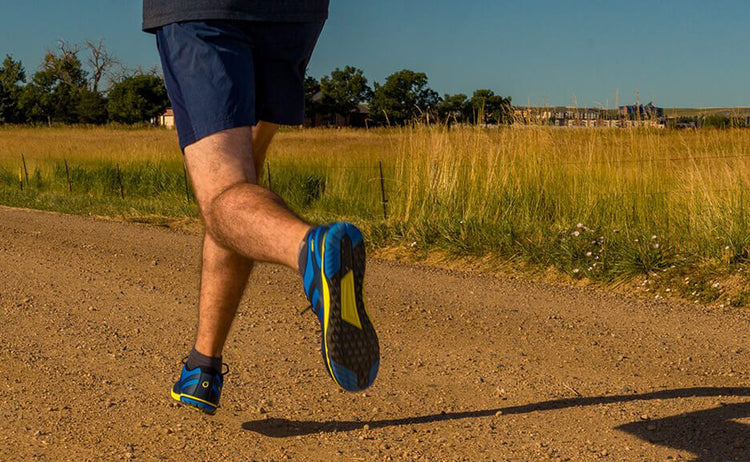
Benefits of Barefoot Running
Barefoot running is more than just a trend. Many runners choose to ditch their shoes simply for the freeing feeling of running in bare feet. But people who run barefoot may enjoy many benefits beyond that. Keep reading to learn the top reasons why you should consider running in your bare feet or making the switch to barefoot shoes. The Benefits of Barefoot Running So what are the advantages of barefoot running? Here are the benefits runners may experience when running barefoot. Benefit 1: Running Barefoot Helps Strengthen Your Feet We know from studies that runners who wear barefoot shoes for walking may strengthen the muscles in their feet, ankles and calves. When you move in bare feet, it stretches and lengthens the small muscles, tendons and ligaments in the foot. Strong foot muscles can enhance your balance and stability and may reduce the risk of injury. It may contribute to improved posture, as well. Benefit 2: With No Shoes, You Can Spread Your Toes Another benefit of going barefoot is being able to spread your toes. Getting out of shoes with pointy toe boxes that squeeze your feet and going barefoot allows for a more natural movement when running or walking. When your toes can splay and spread out naturally, you may experience improvements in balance and stability. Benefit 3: Running Without Shoes Enables Better Footstrike “Footstrike” describes which part of your foot contacts the ground first when you walk or run. Running barefoot provides you with better control of your foot position and helps you contact the ground first with forefoot or midfoot, rather than heel-first, which can lower risk of injury. When you land mid-strike or fore-strike without overstriding, you’re using your legs as springs, helping improve your running form. Benefit 4: Barefoot Running Can Help Improve Posture Our feet are the foundation of our posture. Shoes that squeeze your toes together and have an elevated heel can alter your posture and balance. Ditching your shoes to run barefoot allows you to be flat footed, which helps improve your posture and enables natural running form. Benefit 5: Running in Bare Feet May Reduce Stress on Joints Running frequently can be hard on your joints. Many running shoes have excessive padding, which may result in greater force through your joints. Running barefoot means your foot is flat, potentially reducing the load on the knee joints as you run. This encourages a forefoot or midfoot strike, which helps reduce stress on your knees joints. Can’t Run Barefoot? Try Barefoot Shoes Of course, in many cases, it’s not appropriate or safe to run barefoot. In those situations, barefoot shoes can provide you with the benefits of being barefoot while offering a layer of protection so you can safely feel the ground beneath you as you run. While “barefoot shoes” sounds like a contradiction – you’re either barefoot or in shoes – the idea is that barefoot shoes give you the closest thing to a barefoot experience, while still offering protection when you’re walking, running, or doing any other activity. So, if you’re considering barefoot shoes, it’s helpful to understand the benefits of simply being barefoot because you’ll enjoy similar benefits when wearing barefoot shoes for your runs.Here are a few distinct features of barefoot shoes that mimic running barefoot and how they help runners: Natural-Foot Shape Barefoot shoes have a wider, foot-shaped toe box that does not squeeze your toes. Shoes with a wide toe box give your toes plenty of room to splay, letting your feet spread and relax. This allows your feet to function and move more naturally while running. Zero-Drop Barefoot shoes have “zero drop”, which means the heel-to-toe drop of a shoe is zero – in other words, your heel is level with the rest of your foot. Most traditional running shoes have elevated heels, which causes some parts of your body to be overworked and others to be under worked (also known as, IMBALANCE). Wearing barefoot shoes with zero drop can help improve body alignment. Flexibility Stiff shoes effectively bind the intricate muscles of the foot, preventing the natural movement of the muscles, bones and joints. Barefoot shoes provide more foot flexibility compared to traditional shoes, allowing natural movement of the muscles, bones and joints. Natural Foot Support Barefoot shoes have no arch support which helps to build foot strength naturally. With no excessive padding or support, your feet become their own support system, allowing you to build foot strength the more you wear them. And while this may seem counterintuitive, research shows shoes with arch support isn't all that it’s cracked up to be. When you have something supporting your arch, it can’t actually move through its full range of motion. Because barefoot shoes don’t have arch support, your feet can move freely and naturally, supporting themselves. Whether you have flat feet or high arches, having strong arches is the most important thing. Weaning off shoes with arch support can take time, but you may benefit in the long-run, by building up foot strength. Protective Thin Soles Thin and protective soles allow you to maintain a connection with the ground, making it easier for you to move confidently and strongly. Your feet have 200,000 nerve endings in each sole telling your brain what you're stepping on so it can control your body properly (starting with your feet) to navigate and adjust to the terrain. A thick, heavily cushioned sole mutes this connection between your brain and your feet. A study by Dr. Daniel Lieberman found that “traditional” running shoes with cushioning and elevated heels encourage runners to use a rear-foot strike with greater collision forces compared to the mid- or fore-foot strike and smaller collision forces of barefoot runners. A Word About Transitioning to Barefoot Shoes If you’re thinking of transitioning to barefoot running, treat it like going to the gym. Just as you would gradually increase your weight or volume the more you workout, gradually increase the amount of time you spend running in your barefoot shoes. And remember, your form is critical for long-term success. Closing Out: Benefits of Barefoot Running There are many health benefits to barefoot running. Whether you’re running in bare feet, or wearing barefoot shoes, you may enjoy the potential benefits of better form, and stronger feet, ankles and calves. Barefoot shoes allow you to run and move freely, so you can “Live Life Feet First”. Intrigued? Shop our men’s and women’s footwear selection here to find running shoes. The content of this post does not constitute and is not intended to be a substitute for professional medical advice, diagnosis or treatment. Always seek the advice of a physician or other qualified health provider with any questions or concerns you may have about your health or a medical condition.
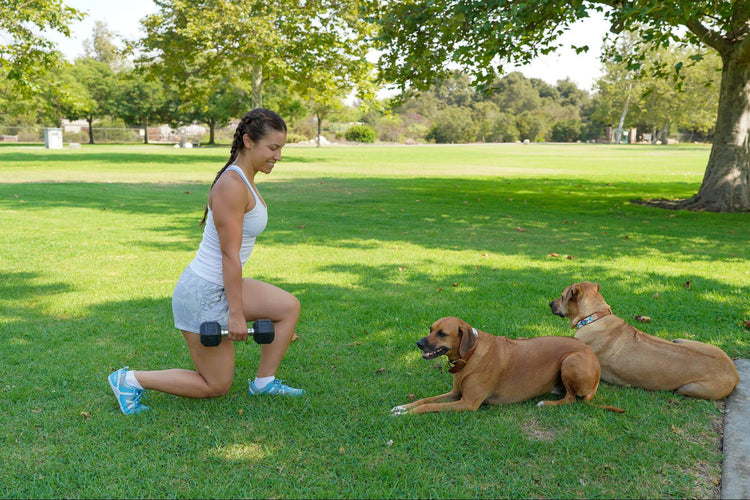
Working Out With Your Dog
It’s common knowledge that exercise improves your overall health and well-being. What’s less well-known is that the same is true for your four-legged furry friends.Pet parents want their dogs to be happy, and that means helping them be fit and healthy. Like people, dogs can be susceptible to obesity and the associated health risks. A regular exercise plan for your dog can help prevent or reduce obesity. In addition to the physical benefits, your dog may also get mental health benefits from exercise.Since fitness is important for both dogs and humans, why not exercise together? Your pup can be a great (and cute) workout companion, making workouts more fun and engaging, while also helping you maintain your commitment.Keep reading to discover some great ways to work out with your dog.Benefits of Working Out With Your DogAt first glance, the idea that dogs need exercise beyond their normal activities might seem silly. However, the number of benefits your pet can get from a regular exercise regimen is impressive. Better fitness Weight management Cognitive improvements Improved mental health Fewer behavioral problems Increased life span Reduces affects of aging Maintain muscle mass Reduce the risk of diabetes, heart disease, and other health issues Improve bone density and reduce joint pain and arthritis. Build muscle Improve sleep. A tired dog will sleep better. Socialization and obedience: the ability to remain close, sit when commanded, and stay calm on a leash. It’s a great bonding experience with their human companion! Not to mention, a pup that gets regular exercise will be happier and more engaged.For humans, working out with a dog can add a much-needed dash of fun to an otherwise generic workout.How Much Exercise Does My Dog Need?The consensus is to exercise 30 minutes to 2 hours per day. According to the American Kennel Club, the recommended amount of exercise needed can vary. The right number of hours and exercise intensity for your pup will depend on a few factors.Spot Pet Insurance adds: "Dogs thrive on regular exercise, but the ideal workout plan isn't a universal solution. It's crucial to tailor your dog's exercise routine to their individual needs, considering factors like breed, age, energy level, and health conditions. High-energy breeds like Border Collies may need a couple of hours of intense activity each day, while senior dogs or those with health conditions might benefit from shorter, gentler walks or swims. Always pay attention to your dog's behavior—if they seem tired or are struggling, it's time to take a break."Here are a few factors for pet parents to consider: Breed - the energy level of a dog varies by breed. High-energy breeds like herding and sporting dogs require more physical activity. Age - Older Dogs still need to engage in physical activity to keep their bodies working; however, you may opt for lower-intensity workouts. For puppies, several shorter workouts may work best for their growing bodies. Overall Health - your dog's health will factor into how much exercise your dog needs. For instance, an adult dog with heart or respiratory issues may need a shorter or lower-intensity exercise routine to avoid causing discomfort. Be sure to weigh each of these factors as you decide on which types of exercise are best for your dog.Exercises To Do Together With Your Pup CompanionThere are so many ways to work out together with your furry friend. Trying a variety of exercises with your dog can help you get a sense of what they enjoy.Here are a few activities of varying intensity to consider trying with your dog.1. WalkingWhile walking is a low-intensity activity, it certainly counts as exercise! For some dogs, going for a walk will be the best option for their health. Walking can be an excellent activity to release pent-up energy and reduce stress levels for senior dogs or adult dogs with a health condition.2. RunningDogs enjoy many of the same benefits humans get from running. But whether running is a good fit for your pup depends on its breed, age, and overall health.To get started, try a light jog to a nearby park, field, or beach. Use a leash to keep your dog within your control. Also make sure they are well-hydrated and avoid extreme weather conditions–those aren’t good for either of you!Not only does running with your dog make things more fun, your dog can also push you to run faster. So, lace up those running shoes and get running with your pup!And if you’re wondering, yes, dogs can experience a runner’s high as well.3. Short SprintsBreak up a walk or light jog by adding short sprints — this is high-intensity interval training (HIIT) for you and endurance training for your dog. It’s a great middle-ground between walking and long-distance running. After a warm-up, try 8-10 interval sprints of 30 seconds at your local park or facility. If you have a high-energy dog, it’s going to love the chance to run at speed alongside you.4. HikingHiking with your pup can be a wonderful bonding experience and a fantastic workout. Flat-ground hiking is a low-intensity outdoor activity you can both enjoy. Try a longer hike with hills, or even backpacking for a more intense workout. It’s a mutually beneficial activity that cultivates companionship in a way that a walk around the neighborhood can’t quite match.5. Running Up StairsRunning up and down stairs is an excellent way to help your dog build muscle mass. Find a nearby park or outdoor space that has a staircase. Before trying stairs with your dog, be mindful of their breed, health, and age, as not all dogs may be able to handle stairs.6. YogaDog yoga gives a whole new meaning to “downward dog”. Dog yoga (also called “doga”), involves incorporating your pup into your yoga poses. A big component of dog yoga is to find your zen together – when you find peace and calm during your yoga session, so too will your dog.7. Agility CourseNo matter what breed your dog is, they will love running through tunnels and jumping through hoops! You can purchase an agility course online, and set it up in your backyard or at a local park. Agility courses provide mental and physical stimulation for your dog, and you’ll get a great workout trying to keep up with them.8. Bodyweight ExercisesWith a set of bodyweight exercises, you and your dog can both get a great workout together.Use treats or toys to motivate dogs as you do: Planks Push ups Sit ups Squats Bridges Lunges Russian twists It’s important to note many of these exercises work better for small or medium-sized dogs.For smaller dogs, you can try holding your dog in your arms as extra weight while performing these exercises.9. HIIT Workouts + FetchCombining high-intensity interval training (HIIT) workouts with fetch is another great way to get a sweat going for you and your dog.Here are a few high-intensity interval training exercises you can do that don’t require equipment. Jumping jacks Burpees Mountain climbers Box jumps High knees Lunge jumps Do these while you play fetch with your pup. Throw the ball (or frisbee or stick), and then do as many reps as possible before your dog returns it. This way, you will both get in some cardio while working out together!10. SwimmingSwimming is another low-impact activity that is great for most dogs. Swimming is a non-weight-bearing exercise, so your dog can strengthen their muscles without putting additional stress on their joints and tendons.Meet The Dog Fitness ExpertsWant some tips on working out with your dog? These fitness professionals offer guidance on how to include your dog in your workouts.Kim Flatley, Fitness With FidoKim Flatley is a certified canine fitness trainer and owner of Fitness with Fido in St. Louis, Missouri, helping dogs and their owners live their best lives. She loves seeing dogs gain confidence by exercising, improving their mind and body, and creating a happy, joyful space and outlet for them.Facebook | Instagram How did you get the idea for a fitness-with-your-dog program?I started Fitness with Fido back in 2015 as a way to save time! I had a very high energy standard poodle Oscar who also didn't like it when I left him home to go to the gym, so I started combining my workouts at the park. After a while I realized others may also be interested in this as well. I have always loved dogs since I was a little kid and always knew I wanted to own my own dog business when I grew up. After high school I went to school to become a professional dog groomer in 2009. I groomed full-time professionally for about 10 years and groom now by appointment only. I received my associate’s degree in business administration 2012 and my fitness and nutrition certifications in 2015 to prepare to share my love for dogs & fitness with everyone else. Since then our business has evolved more into the canine fitness side of things, so I earned my Canine Fitness Trainer Certifications in 2023 & 2024 to share all the things you can do with your dog to keep them as healthy as possible!What can first-timers (and their pups) expect when you join a class with you?The first class can be filled with excitement from your dog as they're not sure what you signed them up for! They realize it's not the vet or groomer so it's not as scary, but then it's not the dog park where they can go run around and play. It's an actual class designed for them and their owner to exercise, train and bond! We take turns to work on manners, and when it's their humans turn, we work on exercises for them to keep them in shape and sometimes even combine some of the moves together for fun! Best of all is seeing the pups' confidence grow and strengthening the bond between them in a playful way.What are the benefits of exercising with your pup?There are many benefits of exercise for each of you like endorphins releasing, making you as a owner and handler feel more relaxed, but the same goes for your dog where you might not see as much boredom behaviors like chewing on things. You create memories by spending more time together figuring things out to work better together. Regular exercise can help prevent injuries. It's great to set up obstacle courses in your home on hot and cold days when you're not outside as much to walk and play. It all comes with time if you're wanting to workout together to welcome them in your space, but to also respect your space by not jumping up on you for safety. You may also figure out you like working your dog out separately so that you can pay more attention to their form. Sometimes it depends on the day!Angi Aramburu, Go Fetch RunAngi is the founder of Go Fetch Run, which offers dog-friendly workout classes, currently partnering with the YMCA in San Antonio to provide classes to their members. Go Fetch Run licenses its program for those interested in offering it in their community.Facebook | Instagram How did you get the idea for a fitness-with-your-dog program? The idea for this program stemmed from my lifelong experience as a dog owner. I often found myself torn between walking my dog and fitting in my own workout, and I’d end up feeling guilty about whichever choice I made. That’s when it hit me: why not combine the two? I reached out to a seasoned dog trainer to learn effective techniques and ensure the safety and efficacy of the program. The result is an innovative, hour-long cross-training class that blends strength training with fitness tubes, high-intensity cardio, plyometrics, agility drills, core exercises, and our Down & Dirty Obstacle Course — all while including our canine companions. Throughout the class, dogs actively participate: they hold positions while we perform stationary exercises and are then rewarded with sprints or turns on an obstacle course featuring jumps and tunnels. This approach provides a comprehensive workout for both owners and dogs and enhances a dog's behavior, both in class and at home. We have also added a Dogalates class, which is a hybrid yoga/pilates format better suited for our elderly and less active dog friends. What can first-timers (and their pups) expect when you join a class with you? For first-timers, the experience will vary based on your dog’s breed, fitness level, and temperament. It's crucial to be mindful of your pet’s needs and limits. For example, dogs with shorter snouts may struggle with intense cardio, so opting for gentler exercises with them is best. Remember, your dog doesn’t need to be active throughout the entire workout. In fact, simply focusing on sitting while you perform exercises can be a valuable mental workout for them. Most dogs are just thrilled to spend time with you, regardless of the activity level. Some may be more energetic or better trained than others, so it’s important to adapt the session to suit your dog’s abilities and have fun together! We always provide exercise modifications to ensure everyone gets in a great workout. In a typical class, we will begin by doing a short jog into the park, stopping along the way to ask the dogs to sit while we continue jogging in place. This offers a warm-up for the humans and gets the dogs used to staying still while we move, which is not easy for them and provides mental stimulation. After that, we alternate between stationary exercises, such as push-ups, burpees, or squats, with exercises that take us on the move. This acts as a reward for the dogs who patiently wait for us. The most common feedback is that the class is harder than they expected, and that it is the most fun fitness class they have ever taken. The dogs add a lot of comic relief that makes difficult exercises easier to handle. It's the only exercise class I know of where you will likely get a kiss while holding a plank. Clients also tell me that they feel better leaving for the day knowing they spent quality time with their dogs, and the dogs are happy and tired! What are the benefits of exercising with your pup?Exercising with your dog offers a range of benefits that go beyond just getting a workout. Dogs are incredible motivators, making it easier to stick to your fitness routine. They’re always eager to join in, never late, and never miss a session. Their enthusiasm can turn even the toughest workout into a more enjoyable experience. Plus, seeing your dog's joy and excitement can boost your mood, enhancing the stress-relieving effects of exercise. For your dog, these exercise sessions are a highlight of their day, filled with the attention and interaction they crave. It’s a win-win situation: you get a great workout, and your pup gets quality time with you!Sean Prichard, Pant & WagSean is the President and Head Canine Fitness Coach at Pant & Wag, offering the perfect mix of exercise and socializing, giving pups the best time ever while they explore the coolest parks and trails in the Washington DC area.Facebook | Instagram How did you get the idea for a business centered around running and hiking with dogs?When I worked at a regular 9-5 office job, I realized that my dog wasn't getting the exercise or sense of adventure she needed from traditional dog service companies such as dog walkers and dog daycare. As a dedicated dog dad, her health and happiness was my number one priority so I started taking her on trail runs and dog hikes and then I started inviting some of her dog friends to join us and the business grew out of that. Our signature service is called a Fitness Adventure because we always incorporate exercise into everything we do and we always do it out in the woods which provides the adventure aspect.What are the benefits dogs get from running and hiking?Running and hiking provides dogs with both physical and mental benefits. Physically, dogs that are part of a consistent running or hiking program will have improved cardiovascular health, better weight management, increased muscle tone, better joint health, and increased agility and flexibility. Behaviorally, well-exercised dogs will experience stress reduction, mental stimulation, and stronger bonds with their humans all of which leads to an overall improvement in behavior.”What are a few important tips for pet parents who want to start doing longer runs or hikes with their dog?Safety always comes first so consult with your veterinarian to make sure your dog is in good physical condition and has no underlying health issues. Once you've started an exercise program, increase your intensity gradually; many dogs, particularly the working and herding breeds, will instinctively hide any fatigue or discomfort they are experiencing and will push themselves beyond a healthy limit, so increase incrementally to avoid overexertion. You'll also want to invest in appropriate equipment for yourself and your dog. A comfortable harness and portable water bowl are a must-have for your pooch. The good news is your dog comes pre-equipped with four built-in trail running shoes, so you'll only need to buy shoes for yourself!Suzi Teitelman, DogadogSuzi is the founder of Dogadog, offering doga classes in Jacksonville, Florida, and training courses to help become a doga teacher. She has been teaching dog yoga for nearly 20 years.Facebook How did you get the idea for dog yoga (doga)?I started teaching Doga nearly 20 years ago with my cocker spaniel, Coali. As Crunch’s New York-based director of yoga, I had an epiphany when Coali began hovering by my yoga mat during at-home sessions. From there, the idea of Doga was born. I started teaching doga with my private clients, into a class I called Ruff Yoga. Since then, Doga has expanded to cities around the world, and I have trained many of the world’s Doga teachers, while continuing to teach Doga classes in Florida, serving dogs and their human companions.What are the benefits of doing yoga with your dog?Practicing doga, or yoga with your dog, can deepen the bond between you and your furry companion. Doga is a practice that is suitable for all levels and ages, as well as types of dogs regardless of breed or size. It is not just a physical activity, but a way to cultivate harmony and balance within yourself and a beloved pet. It is a beautiful way to deepen the bond between you and your furry companion while also taking care of your own physical and mental health. Whether it’s in the morning, at the park, or before bed, participating with your dog can bring a sense of peace and harmony to both you and your furry friendHow can I do doga on my own? It is crucial to approach dogs with a gentle mindset and never force yourself or your dog into any movements. The essence of Doga lies in simply being together on the mat and allowing the practice to unfold naturally. It is advised for humans to have a basic understanding of proper alignment in yoga postures before incorporating their dog into their practice. Unlike traditional yoga, Doga does not require fancy poses or balancing your dog on your head. Instead, you can incorporate your furry companion into any poses, even if they just sit next to you as you move. As you focus on your breath and become calm, your dog will pick up on your relaxed energy and mirror it. This creates a peaceful and loving exchange of energy between human and canine. As you move through asanas together, the bond between owner and dog strengthens, creating a deeper connection and understanding between the two. So, remember to approach dogs with an open and gentle mindset, and let the practice unfold naturally for a fulfilling experience for both you and your dog. Dog Exercise Safety TipsBefore you get started exercising with your dog, here are a few tips and considerations to keep your dog safe before, during and after your workout: Keep your pup hydrated: carry plenty of water during your workouts Avoid exercising outdoors in extremely hot conditions Consider doing workouts in the morning or evening when it’s not as hot and humid outside Find significantly shaded areas to take your dog to, like a wooded trail or park with large trees. Watch for signs of overheating: panting, increased heart rate, disorientation, vomiting, and diarrhea. Protect those paws, particularly in the summer and winter months. Consider pup pads if surfaces are extremely hot or cold. During the summer months, consider avoiding asphalt and blacktop surfaces. Are You Ready to Work Out With Your Pup?Want to try one of these great ways to exercise with your dog? Working out with your pup can be a fun bonding experience that helps keep you both active and healthy. Just make sure your dog is safe during the workout, particularly in the Summer and Winter months.Whichever activity you decide to do, there is a barefoot shoe that can help you enjoy it more. Find shoes for walking, running, hiking, swimming and more. We have a wide range of barefoot shoes for women and men for any lifestyle or activity… from going to the dog park to a high-intensity workout with your pup.A special thank you to our featured contributors!The content of this post does not constitute and is not intended to be a substitute for professional medical advice, diagnosis or treatment. Always seek the advice of a physician or other qualified health provider with any questions or concerns you may have about your health or a medical condition.
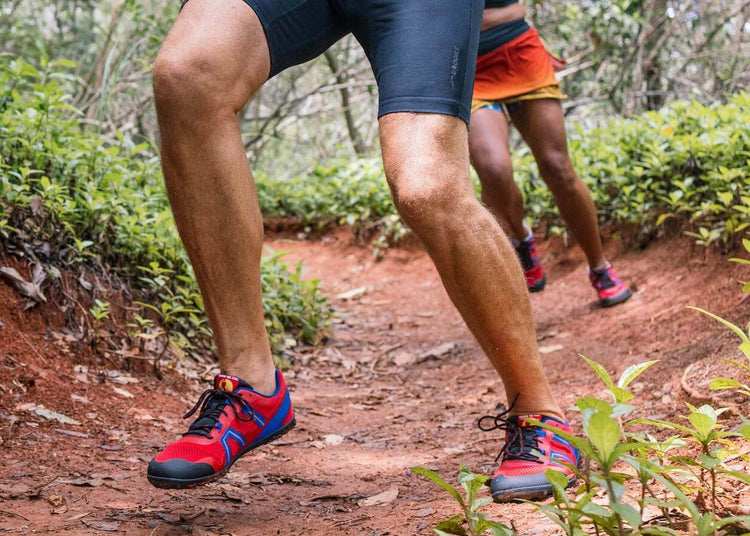
How to Be Lighter on Your Feet While Running
Why You Want to “Run Lighter” Running lighter can have three significant effects on your running: Make running fun Become more efficient Help reduce injury risk How do you run lighter? It just takes a few minor form tweaks that you’ll discover below. Use Sound to Know How “Light” You’re Running The sound your feet make when they hit the ground tells you a lot about your running form. If you hear thuds or slapping noises, you’re “running heavy.” These sounds can indicate that you can improve your running form. Once you address your form, those sounds will not only go away, but you will improve your running efficiency. So, as you explore the tips, below, use the sound of your feet as feedback – your built-in coach. Tips for Running Lighter on Your Feet What changes to your form can help you run lighter? Here are the top tips runners use to improve their form and run lighter on their feet: Make sure your feet land under your body (avoid overstriding) You want to land forefoot or midfoot Let your heels touch the ground Place and lift your foot off the ground as you run Use cues to help avoid plopping your feet Keep your core engaged Pick up your cadence Run barefoot, or in minimalist shoes Let’s dive into each tip. 1) Make sure your feet land “under your body” Landing with your foot too far in front of your body means you’re overstriding. It’s like putting on the brakes each time your foot touches the ground. Why do runners need to overcome this habit? Research shows that overstriding increases forces that go into your joints (rather than letting your muscles, tendons, and ligaments mitigate force). And many researchers believe it's the leading contributing factor for getting injured. When you run, aim to have your feet land under your body, and not out in front. To get a feel for this, we suggest exaggerating this by putting your feet “behind you” when you land. Of course, you won’t actually be able to do this, but if you try, it will highlight what overstriding feels like. 2) Land forefoot or midfoot The type of footstrike is important for running lighter. Ideally, you want a forefoot or midfoot strike instead of a heel strike. When combined with landing under your body, landing mid- or fore-strike means you're using your legs as springs, starting feet first. If you land on your heel, you've lost the first spring in your leg. Do NOT reach out with your foot to land on your forefoot or midfoot - in fact, it’s the exact opposite of what you should be doing. Instead, land with your foot underneath your body (tip #1). When you do this, it's almost impossible not to land on your forefoot or midfoot. 3) Let your heels touch the ground If you're not used to landing on the ball of your foot, it CAN make your calves and Achilles work harder. Some people never let their heels touch the ground (even in shoes!), but there's no inherent benefit for doing that. In fact, if you don't let your heel come down as far as it feels right, you're not fully using your Achilles -- the best spring in your body -- to give you "free energy" when it un-stretches. Once you land on the ball/midfoot, you can let your heel drop if it feels better to do that. It will feel better or worse depending on whether you’re: Going uphill or downhill On a flat surface or an uneven one Moving faster or slower 4) Place and lift your foot off the ground as you run Many runners practically slam their foot onto the ground, especially if they’re overstriding. Instead, think about “placing” your foot on the ground, like how you would place a dish on a table… gently. If you land with your foot under your body (tip #1), and you land midfoot or forefoot (tip #2) this is much easier to do. In fact, it’s almost automatic. To get your foot off the ground, most runners PUSH their toes into the ground. Not surprisingly, this is called “toe-ing off”. And when you toe off, you’re using your calf more than necessary, wasting energy. Instead, think about lifting your foot off the ground by lifting your knee, or pulling your foot off the ground (both of which, technically, happen by flexing your hip). An image I like to use is stepping on a bee – you wouldn’t PUSH your foot to get off the bee, since that would drive the stinger further into your foot. You would reflexively use your hip flexor to LIFT your foot off the ground. Both “placing” and “lifting” can keep you light on your feet. 5) Use a cue to help you “un-plop” your feet This is actually similar to “placing” your foot but with a twist. Many people “plop” their feet on the ground and leave them there for too long. Ideally, to run lighter, you want your feet on the ground for as little time as possible. The actual amount of time your feet are on the ground will change based on your running speed, but this tip will help you find the ideal time, no matter your speed. Coaches use a few different cues to teach runners how to avoid plopping. It helps to pretend that… You’re running on hot coals or eggshells Your feet are wheels, and you want them to touch where the wheel meets the ground The ground is moving below you like a treadmill, and you want to move your feet at the same speed as the treadmill Think about lifting your feet off the ground before they even contact it Whichever analogy you choose, you must find your own way of meeting the ground lighter with your foot and keeping it on the ground for as little time as possible. Remember to listen to the sound you are making as your foot hits the ground and use that sound as a coach. 6) Keep your core engaged Core engagement is important for light running. But it’s not just having strong abs. When you run, think of your body as a spring. If you collapse in your midsection, you’re weakening the spring and making it less efficient and, therefore, making it harder to run. Keeping your core engaged while running is about maintaining a gentle but consistent engagement of your abdominal muscles. Imagine lightly drawing your belly button towards your spine in a gentle, controlled manner that doesn't hinder your breathing. This should feel natural and sustainable throughout your run. 7) Pick up your cadence Your running cadence refers to the total number of steps you take per minute. Most people think there is a target cadence of 180 strides per minute. Contrary to popular belief, there’s no optimal running cadence. Some successful runners do more, some do less. That said, most runners run with a cadence that’s too slow. Moving your feet faster gives you less time to keep your feet on the ground. That’ll help you learn to place/lift, “un-plop” and avoid overstriding while you run. So, on your next run, pick up the cadence just a bit without running faster. It’ll feel odd at first because you’re doing something different. But once you get used to that new cadence, try picking it up a BIT more. You’ll find a sweet spot that keeps you lighter on your feet without feeling awkward. And, yes, if you’re inspired to run with a metronome, it could help ;-) 8) Run barefoot, or in minimalist shoes Taking off your shoes and running barefoot can improve your technique. Of course, this isn’t always possible, so wearing a minimalist shoe can help. You don’t need to switch to a barefoot shoe, or barefoot running full time, but doing some barefoot running can highlight some form flaws that you would never notice in a “normal” shoe. In short, running barefoot with good form feels good, and bad form feels bad. If you just explore the tips above while running barefoot, you may find that last little “hitch in your giddyup”. If you want to run barefoot, use these tips: Run on a smooth, hard surface. This will give you the most feedback. A sidewalk or bike path is good. Grass is not great because it’s sort of like taking the padding from a shoe and covering the world with it. Plus, the ground is rarely even, and you can’t see things you might not want to step on… or in. Start SMALL. Let your first barefoot run be 20-30 seconds. Yes, SECONDS. Then, the next day, see how you feel. If you’re sore like you just went to the gym, that’s good. Rest and repeat until you enjoy those 20-30 seconds… then add 10 seconds every time you feel ready If barefoot isn’t for you here’s how barefoot shoes can help improve running form: Barefoot shoes have a wider toe box that allows toes to splay, and move naturally, which can improve posture and balance. Plus, it feels great to not have your toes all squished. Truly barefoot-style shoes have a non-elevated heel (a “zero-drop”) which naturally encourages runners to land more on their midfoot or forefoot rather than the heel. Normal shoes with a “drop” will shift your center of gravity forward, and adjusting to that can put strain on your back, knees, ankles, and hips. Minimalist and barefoot shoes are lightweight shoes that do not have unnecessary padding. They let you use your muscles, ligaments, and tendons as natural shock absorbers and springs (better than any man-made foam!) They mimic the feeling of running completely barefoot while giving you a layer of protection. Barefoot shoes don’t “support” your arch which, like supporting any joint, makes the surrounding tissues weaker. Research shows that merely walking in a barefoot shoe builds foot strength as much as doing a foot exercise program. So barefoot shoes let you build strength in your feet and legs naturally the more you wear them. When your feet and legs are stronger, you can run longer distances without feeling fatigued. Even if you run in “normal” shoes, barefoot shoes are great for active recovery and that strength-building I just mentioned. So slip them on once you’re done with your “normies.” The content of this post does not constitute and is not intended to be a substitute for professional medical advice, diagnosis or treatment. Always seek the advice of a physician or other qualified health provider with any questions or concerns you may have about your health or a medical condition.
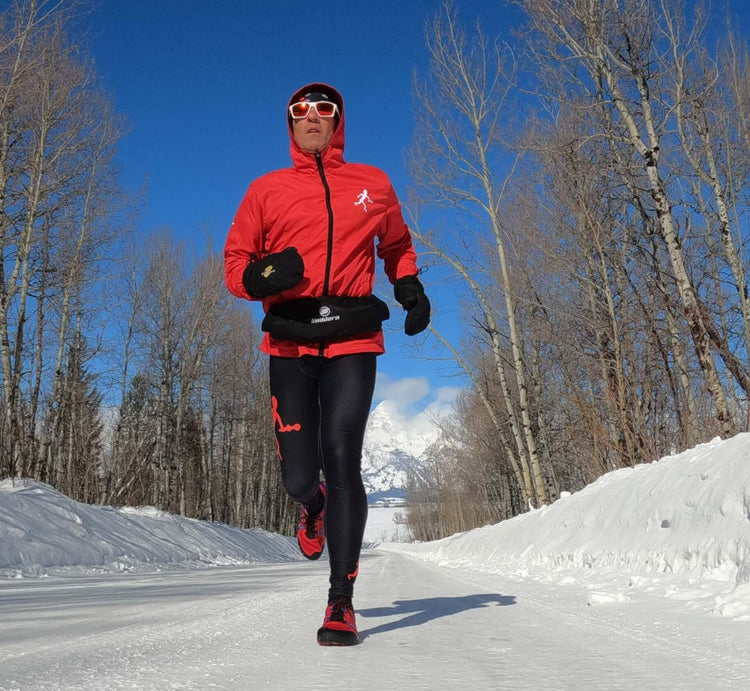
5 Easy Tips For Better Running - Global Running Day 2024
In this 5-minute guide to better running created by “Born to Run Coach” Eric Orton, he takes the concept of running for fitness and rewrites it. When you know how often to run, how fast, and how far, you can turn running from a workout into a joy. Watch Coach Eric’s guide to help you make the most out of every step and avoid common frustrations and injuries. To build a running habit that you look forward to, keep the five things Coach Eric shared at the top of your mind... Don’t compare yourself to other runners. Your running journey is your own. Make it easy. If you want to build a strong, joyful running habit, keep it fun. Turn running into a craft. Explore form and technique and pay attention to how your body moves and feels when you run. Do less more often. A ten-minute run every day will get you further than trying to run for an hour a couple times a week. Focus on your foot core. Running strength and form starts with your feet, so build that foundation. Put Yourself on the Fast Track to Better, More Joyful Running If you want to build your foundation faster, develop better running form, and get more joy from your runs, Xero Shoes can help. Xero Shoes running shoes have foot-shaped, wider toe boxes that let your toes splay and spread. That gives your feet a wider, more natural base when you’re running, which promotes balance and gives you fuller access to your “push-off” power. They also have a zero-drop, non-elevated heel. This puts your foot in its natural position when you’re running and you’ll notice how your posture improves. The thin, flexible soles let your feet move and bend naturally, give you ground feedback which helps with form and technique, and provide just the right amount of protection for your feet. Try Xero Shoes running shoes for better form and a more joyful run. Our Most Popular Running Shoes Born To Run Shoes Run Faster and Further BUY HERE HFS II Lightweight Road Runner BUY HERE Forza Runner Distance Running Shoe BUY HERE
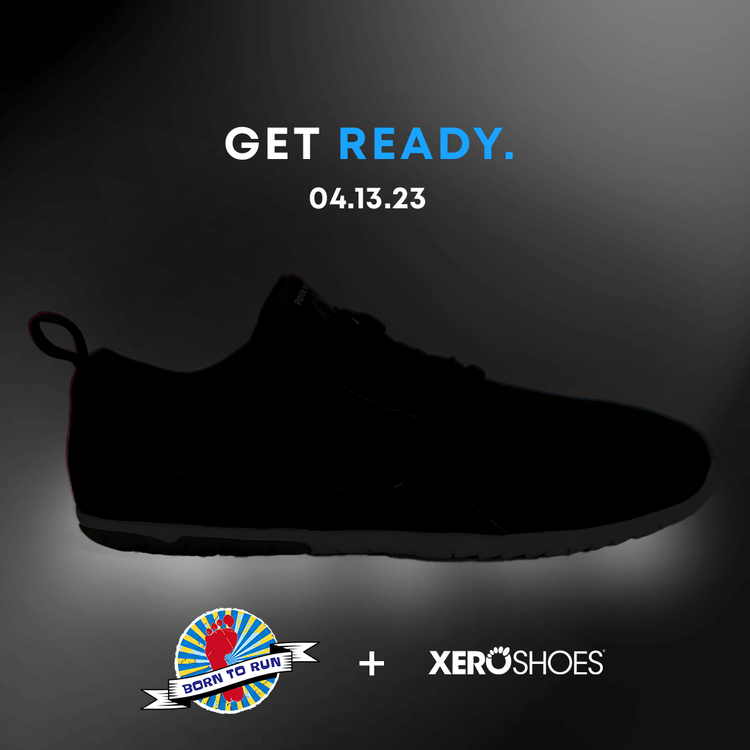
“The Dream Shoe”: A Partnership with Xero Shoes & Born to Run 2 Authors
Fifteen years ago, Christopher McDougall’s iconic book Born to Run changed our ideas of running technique, and running footwear, forever. But McDougall and Eric Orton, his running coach and recent co-author of Born to Run 2: The Ultimate Training Guide, haven’t ever officially partnered with a running shoe company. UNTIL NOW. On April 13th, Xero Shoes will release Born to Run shoes for both trails and roads. Both models will feature: Thin, tough soles that hit the sweet spot of flexibility and rock protection Wider toe boxes and zero heel elevation for natural movement Lightweight designs with breathable, soft uppers Christopher and Eric have been putting these shoes to the test for months, and they’re thrilled with their fit, feel, and overall functionality. “These have everything you need and nothing you don’t. This is the way!” McDougall raves. “If this is Christopher’s dream shoe, and it’s my shoe, this is YOUR dream shoe,” Orton says. We’ll provide additional details, images, and exclusive deals prior to launch. Stay tuned and spread the word in your running community! NOTIFY ME Why did Christopher & Eric Partner with Xero Shoes? Christopher McDougall: “After Born to Run came out, I was approached by a ton of shoe companies who all wanted to partner with some kind of collaboration. I uniformly said no, for two reasons. Number one: I never saw anything I really liked. And number two, I could never be sure they would continue creating the kind of shoe that I believed in. And then I put these Xero Shoes on my feet, and I basically didn’t take them off for the next two months. That’s why I’m so happy now to partner up with Xero Shoes, and I have 100% confidence in recommending them to anybody. If these shoes are on your shelf, you're going to be happy to pick them up.” Eric Orton: "This relationship all starts with the Xero Shoes’ overriding philosophy and focus on natural running and movement. We are in lock-step with this ethos, and it’s very exciting to be partnering with a company that is driven by their mission. Add this to the company’s eclectic staff of shoe industry experts, and you have a powerful combination of business principles and high-end performance shoes. I’m really excited about what Xero Shoes are doing.” Why did Xero Shoes Partner with Chris and Eric? Steven Sashen: “The original Born to Run was a huge inspiration for me when my wife Lena and I started Xero Shoes. And Christopher and Eric have continued to deliver their hard-earned wisdom for foot-friendly training and living ever since. They create happier, healthier runners, not just faster ones. Collaborating with them on a shoe was a personal dream of mine, but also a natural choice for the Xero Shoes brand. The Xero Shoes Born to Run shoes will satisfy the exacting expectations of minimalist diehards. But like all Xero Shoes, they’re also designed to be the most comfortable shoes you own, period. Take them out on your favorite road or trail, and experience the joy of running further, faster with ease – the way you were Born to Run.” Mark April 13th on your calendar, and get ready to feel the difference everywhere you run when you… Live Life Feet First

The evolution of human feet and how to have strong feet - BBC podcast
The BBC's Made of Stronger Stuff podcast just dropped an episode called "Feet." Overall... GREAT. It starts with the simplest idea, the arch in your foot is there to support your body. Spot on! Well, there are actually 3 arches in your foot, but they're referring to the one we normally think of -- the longitudinal arch -- when we use the term "arch." Next, it talks about the evolution of the foot and the arch... fascinating. From there it goes into more of what we know about the benefits of natural movement and barefoot running, much from Harvard's Dr. Daniel Lieberman's research, and from Christopher McDougall's book, Born To Run. And they debunk some myths, like, "pronation is bad." (It's a natural part of the spring-like mechanism in your leg.) They even use a phrase I coined when referring to "normal" shoes: Foot Coffins. So, I like that. :-) Then it gets into barefoot running and, overall, LOVE IT. But there are a few points I think they got wrong that I want to highlight: Suggesting that during the "barefoot running boom" which kicked off in 2009, injury rates "went through the roof." This isn't accurate. Aside from vague definitions of what constituted an injury (e.g. calf soreness isn't an injury), no study compared injury rates from new barefooters to new shod runners.They did make the point that you want to transition slowly to build foot muscle strength (and we know from Dr. Sarah Ridge's study, that merely walking in a minimalist shoe builds foot strength as much as doing a foot exercise program), which is great, but... They say that it takes “3 months, minimum” to build the requisite strength to run barefoot (or in a truly minimalist or barefoot shoe). This isn't accurate either. First, transition times vary, person to person. For some, it's just a week or two. For others, longer. Physical therapist, Jay Dicharry has said that the changes to the soft tissue, if you're someone who needs it, takes 6-8 weeks. In short, There's not one fixed amount of time, and 3+ months is, definitely on the long side. Secondly, transition time depends heavily on what you do TO transition. If you follow the instructions here, by starting SMALL, you can reduce that time greatly. This one's no big deal, but they imply that the Tarahumara are always barefoot. Actually, they spend more time in their tire-tread sandals, especially when running. On the other hand... This is the biggie that they got wrong -- when asked about picking "the best shoe", the advice is "Listen to your body. If it's comfortable, it's good for you."This is patently false if you're talking about a cushioned shoe.That shoe can FEEL great, but be BAD for you. Research shows that cushioning, which FEELS great, doesn't, well, cushion. Runners in highly cushioned shoes often put more force into their bodies and land harder on the ground (in part because their brains are trying to get some feedback from the ground, which the cushioning removes).Here's a brief physics lesson for you: "Pressure" is not the same as "Force." You can think of pressure as the total amount of "push", and force as the speed with which that "push" is applied. Well, cushioning can spread out the pressure, so your feet don't feel it as much, but it doesn't change the force. And since most runners in cushioned shoes land on their heel with a relatively straight leg, the force then bypasses their built in shock absorbers -- muscles, ligaments, tendons... and the ARCH -- and goes straight up into their joints. The flip side, of course, is that many people feel the comfort of Xero Shoes immediately, but for different reasons. Namely, the wider, foot-shaped toe box, the flexible sole that lets your feet move naturally, the non-elevated heel which doesn't alter your natural posture, and the fact that you can get ground feedback through the sole, which your brain needs to help you move most effectively and efficiently. Overall, though, the podcast is definitely worth a listen. It's only 35 minutes long... unless you listen to it at 2x speed, which I do ;-) If you check it out here, let me know what you think in the comments, below.
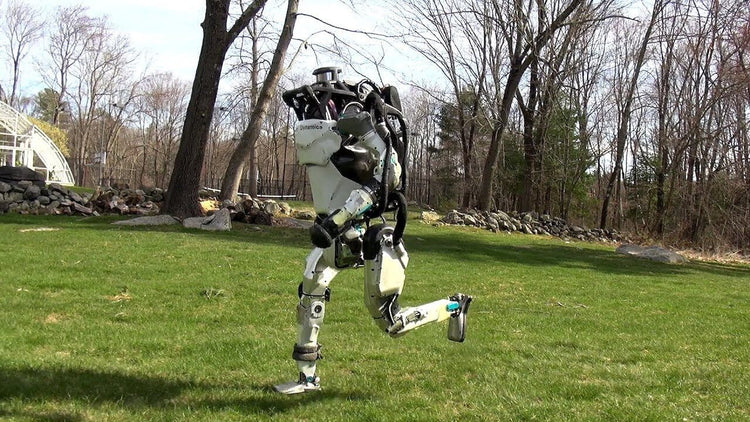
Learn perfect running form from a ROBOT!
If you haven't seen the videos of the Boston Dynamics robots, you MUST.They're simultaneously, amazing and spooky (especially the videos of Spot, the robot "dog."My favorite is the one below, because Atlas the robot has almost PERFECT running form! Check it out: Notice that his foot lands pretty much right under his body. No "overstriding" Notice that his foot lands sort of midfoot, often with the heel off the ground. The heel comes down, but Atlas isn't heel striking. If you know Pose Method or Chi Running, Atlas looks like he's taken a workshop. Video tape yourself and see how you compare to Atlas. If you can make adjustments to be more "robotic" you'll probably find that you're running "more human"!
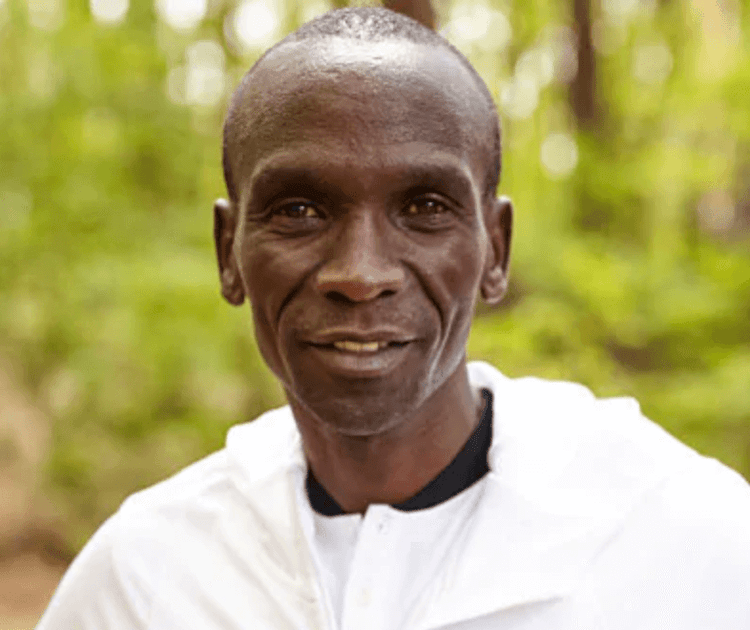
Eliud Kipchoge: It's NOT the shoes!
I'll admit it.I love being right.What am I right about this time?The importance -- or lack thereof -- of shoes in Eliud Kipchoge's sub-2-hour marathon performance.I've talked about how shoes were NOT the delimiting factor in Kipchoge's amazing run here, and in my podcast here, pointing out that the difference between his world record time of 2:01:38 in the Berlin marathon is only 4.58 seconds/mile slower than the sub-2, which was run with pacers, on a flat course (a.k.a. perfect conditions).Well, guess who agrees with me? KIPCHOGE!At Firstpost.com, sub-2-hour marathoner Eliud Kipchoge weighs in on how much of his success came from the Nike shoes he (and his pacers) wore for that event.The answer?Not as much as Nike or most commentators said.More specifically:“It is my legs that are still doing the running,” the Kenyan marathon runner told Firstpost in an email interaction when asked about the impact of his shoes in the eventual timing of 1:59:40 secs.Agreed.Running ~13 miles per hour for almost 2 hours is an AMAZING feat (pun intended).But the way his accomplishment has been reported is mostly about how the shoes allowed him to do this.And Kipchoge further downplays the role of shoes in his success:“Innovations are part of sport and always have been. With running, the effect of technology will always be minimal especially if you compare it to other sports.”Distance running coach, Dr. Phil Maffetone, thinks shoes DO matter, but not for the reason most people believe.In his book, "1:59 - The Sub-Two-Hour Marathon is Within Reach," Maffetone thinks the first person to run a sub-2 in a normal race will do so barefoot (I think his 2nd choice would be something like our Speed Force).Some day, I hope we have the resources to pick the world's best marathoner, support him (or her!) to train barefoot or in Xero Shoes, and show that lightweight (you can't get lighter than bare feet) and natural (hard to get more natural than Xero Shoes) will "let your legs do the running" to a sub-2.
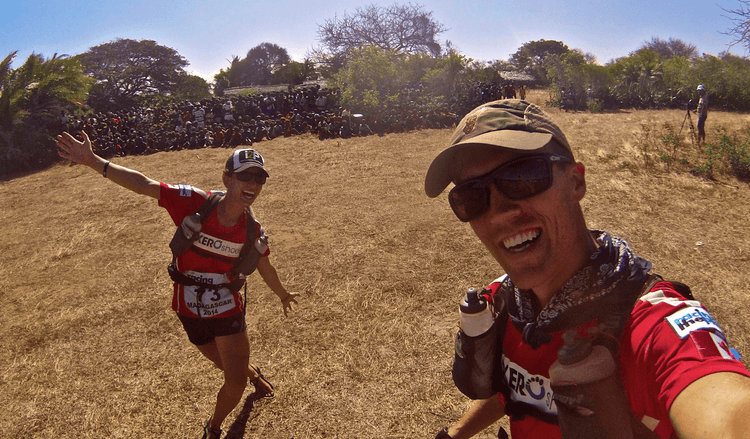
The Evolution of Xero Shoes in an Ultra Marathon Running Couple
Xero Shoes is a company that has come a long way. Looking back, we have come quite a long way as runners and adventurers. As we've grown, we've realized what a long way we've come WITH our Xero Shoes. We ordered our first pair of Xero Shoes in 2013 after reading the book Born to Run and wanting to get more involved with running minimalist. At that time we had both caught the running bug, and were running in our super smelly vibrate 5 fingers!The first pair of Xero Shoes we ever wore were the 4mm DIY sandals and we wanted to get trained up in them for our first ultramarathon together. Our biggest hurdle? It was winter in Edmonton, Alberta, Canada, and our race was only 3 months away. We had a few chilly runs in the cold with numb toes, to say the least. We managed to get enough training in, as we finished the Born to Run 100km race that we had planned! Later that year, we also ran a 50 mile ultra in Fernie, BC (Rocky Mountain style running!), a 100 miler in South Dakota (pretty flat, but HOT), and a 100km race in Costa Rica (where we legitimately ran with Tarahumara runners from Mexico!!). All of these were done in either the 4mm or the 6mm DIY sandals. So if any of you are still wondering “can you run in these?” Yes, you can run for miles and miles!Ultimately, we ended up being the first runners to complete one of 4 Deserts’ 7-day, 150 mile stage races wearing sandals. A year or two later we were living in Chile and Xero Shoes had just released their Z-Trek sandals. This was perfectly timed as we had two ultras planned that year in Chile, yet both had a lot of mountain running on rugged terrain, so we were super excited to wear the Z-Trek sandals at it gave you a bit more stability when on gnarly or muddy surfaces. Very soon after the Z-Trek was released, they launched the Z-trail, and we realized this one was our unicorn. The Z-style rig with a tiny bit more width of sole made it a primo piece of footwear for long trail ultras. We ran a 100 mile race down the entire length of the Florida Keys and with how hot and humid it was, it was super nice to have that tiny bit thicker sole for the 27 hours of pounding. We weren’t quite sure they would ever make the jump, but in 2016 Xero Shoes released their first actual shoe. While the first styles weren’t really built for running, we were excited to see where it lead. Low and behold, it shortly led to the release of our single most favorite shoe (ever): the Prio. With an absolutely incredible fit, a slick look, and the comfort, it's by far the best shoe we've ever put on our feet. I wore my first Prio for a wet and muddy 50km ultra near Seattle, with only two training runs to test them out. Not a single blister and they performed like a dream! It’s interesting how when you buy a shoe that just fits…you don’t have to “break them in." The latest big win for us was when Xero Shoes took the Prio and beefed it up a bit to make the TerraFlex, an athletic shoe with a bit gnarlier treads and a tougher upper. It’s pretty much everything we could have asked for in a perfect Prio… but made more for tough trail running. We’ve run races in the Canadian Rockies with these, over in a Morocco, and all over the US where we can find good trails! There have been a number of styles that Xero Shoes has launched that we love as well, but these were the keystone pieces of footwear that really progressed with us along our ultrarunning journey and we look forward to seeing what they’ll come up with next! :)–Mel & Jon The content of this post does not constitute and is not intended to be a substitute for professional medical advice, diagnosis or treatment. Always seek the advice of a physician or other qualified health provider with any questions or concerns you may have about your health or a medical condition.
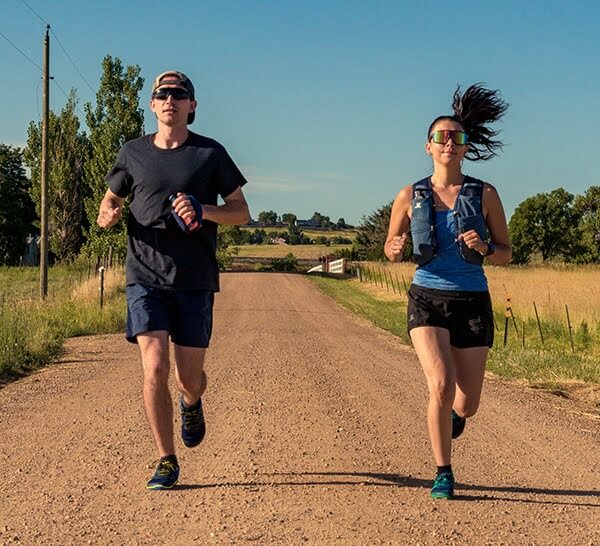
DO NOT “TRANSITION SLOWLY” TO BAREFOOT RUNNING
The more time you spend researching barefoot running and minimalist running — the more articles, interviews with doctors or runners, news stories, and research you dive into — the more you’ll hear one particular warning.Transition to barefoot running SLOWLY. If you make the transition too quickly, you’ll get hurt.Actually, if the piece supports running barefoot, you’ll hear this as a recommendation. If the piece is “anti-barefoot,” then it’ll be a warning.Why You Shouldn’t “Transition Slowly” to Barefoot RunningAdmittedly, even on this site I say something that could sound similar about how to start running barefoot.But to focus on how quickly or slowly you make the transition is to miss the point. Running barefoot safely and enjoyably isn’t about whether it takes you a day, a week, or a year to do so. It’s about HOW you make the transition, not HOW LONG it takes to make it.Transitioning safely to barefoot running (or running in minimalist footwear) is about form, not about seconds on the clock.7 Tips to Help You Smoothly Transition to Barefoot RunningFollow these rules for a safe and smooth transition to barefoot running: Go barefoot or wear a truly minimalist shoe Run on hard and smooth surfaces Your foot should land under your body Use less energy and effort Have your feet touch the ground as little as possible Pick up your cadence Have fun Let’s dive into each of these tips. 1. Go Straight to Barefoot (or Wear a TRULY Minimalist Shoe)It may seem logical that if you've been wearing a shoe with a lot of cushioning or a highly elevated heel, you would want to just slowly transition by starting with a shoe that has less cushioning and a lower heel… and then less and lower until you’re ready for running barefoot or in a barefoot-style shoe.In reality, transitioning to minimalist shoes by going slowly to thinner shoes is not the best way to learn to run barefoot or to run with proper, natural form. Dr. Irene Davis showed how “transition shoes” (which she called “partial minimalist”) can be worse for you than any other shoe, or being barefoot.Instead, you want to go straight to being actually barefoot, since that’ll give you the most feedback, and feedback is what helps you develop natural running form. If that seems too crazy, you can wear a truly minimalist, or “barefoot” shoe with a flat, flexible sole, no unnecessary cushioning, and a wider, foot-shaped toe box.Either way, the idea is to go as close to barefoot as you can and simply start SMALL and SLOW. More about that in a moment.2. Run on Hard and Smooth SurfacesIt also seems logical that you’d want to run on a cushioned surface, like grass.But, successful barefooters recommend running on a HARD, smooth surface… the reason is that you get more feedback from running on a nice road or bike path than you do from running on the grass. Plus, grass tends to be uneven, which could lead to tripping or ankle sprains, and there could be things hiding in the grass that you don’t want to step on… or in.If you want to see a barefoot runner get misty-eyed, show them a freshly painted white line on the side of the road. It's soft, it's smooth, it's cool, it's delightful :-)3. Your Foot Should Land Under Your Body When your foot touches the ground, it should be almost directly under your body. Don’t “overstride.” That is, don’t reach out in front of you with your foot in order to land. Many people who’ve been running in padded, motion-controlled shoes already overstride, reaching out with their heels and landing with an almost straight leg. Some people have heard that when running barefoot, you're supposed to land on your forefoot and will still overstride, but point their toes in order to land on their forefoot.Do not do this!Landing on your forefoot, with your foot out in front of your body puts extra stress on the forefoot and could lead to problems or injury. 4. Use Less Energy & EffortMany people think that when you start running barefoot, calf pain and Achilles pain are almost required. Trust me, 99 times out of 100 calf or Achilles pain comes from using too much effort. And, trust me again, you’re probably not the 1 out of 100 for whom it’s not.As you transition to barefoot running, focus on relaxing, using less energy and effort. For example, rather than pushing yourself off the ground with your foot/toes, try to lift your foot off the ground by flexing at the hip. Pushing off the ground uses WAY more calf muscle effort than is necessary. Similarly, if you think you have to stay on your toes and never let your heel touch the ground, which isn’t true, you’ll put more strain on your Achilles tendon than you need. You can let your heal naturally come to the ground instead.5. Touch the Ground as Little as PossibleWhen barefoot running, or running in truly minimalist shoes, try to focus on touching the ground as little as you can. Rather than “landing” on your feet, think of your feet as something that only touch the ground for as little time as necessary.One way to think about this is that when your feet touch the ground, have them moving at the speed you’re traveling across the ground. Another image that could help here: Your feet should contact the ground more like a wheel that just rolls over it, rather than like a stick that gets planted and pulled out.Another idea: Imagine lifting your foot off the ground before it even touches it. This could help you get your foot off the ground faster.Many other instructions you may find about how to run barefoot are just cues to help you get the correct foot placement and use less effort. 6. Pick Up Your CadenceCadence is the number of steps you take per minute.Picking up your cadence means taking slightly more steps per minute without running faster.There's a commonly held idea that when you run barefoot your cadence should be 180 steps per minute. 180 is not a magic number. Increasing your cadence (just a bit) makes it easier to place your feet under your body, at the correct speed, and with less effort. You can’t “plant” your feet, when they have no time to spend on the ground. You will want to experiment with different cadences that are slightly faster than what you're used to. Knowing that anything different from what you've been doing will initially feel unusual. And, yes, running with a metronome can help.7. Have Fun!You can spot a barefoot runner from 50 yards away. They look like they're having a good time. They're often smiling.So, perhaps the best instruction to help you transition to barefoot or minimalist running is to use fun as your guide. Listen to your body and HAVE FUN… And if you're not having fun, do something until you are.Besides, if you’re just grinding out the miles it’s almost guaranteed that you’ll fall into bad form and increase your chances of injury. How Long Does the Transition Take?The length of time it takes to learn to run in barefoot-style shoes or completely barefoot is different for everybody. For some, it takes no time at all because they already run in the way I described. For others, it takes longer, since they are learning a new skill and a new way to move — and different people learn at different rates. For a rough timeline, it should take anywhere from 1-4 months to fully transition to barefoot running.Effective and enjoyable barefoot running is an ongoing process. You will continue to improve the longer you do it. Taking the time to transition to barefoot running will be worth it in the long run. Focusing on the amount of time it takes you to make the change is putting your attention on the wrong thing. If you believe that it’s just about putting in the hours until you’re suddenly a successful barefoot runner, you may never make the form adjustments that will give you what you want.On the other hand, if you pay attention to the correct things, the important things – to your form, to relaxing more, to having fun – that could dramatically speed up your transition time. Pay attention to your sensations — if it hurts, take a look at the tips above and try something different until it doesn’t hurt. No pain, GAIN.Turn off the clock and turn on your awareness; you’ll have fun running barefoot (or wearing barefoot shoes) in no time.The content of this post does not constitute and is not intended to be a substitute for professional medical advice, diagnosis or treatment. Always seek the advice of a physician or other qualified health provider with any questions or concerns you may have about your health or a medical condition.
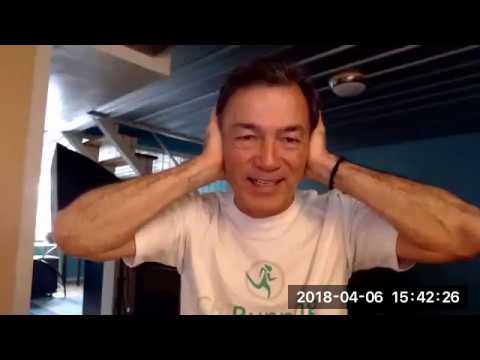
Become a Better Runner -- 3 Free Chi Running Lessons
If you want to become a better runner... or start running enjoyably, then you'll like this video introduction to Chi Running.But, more, you'll like the 3 Free Lessons you get from Danny Dreyer, creator of Chi Running, when you CLICK HERE



